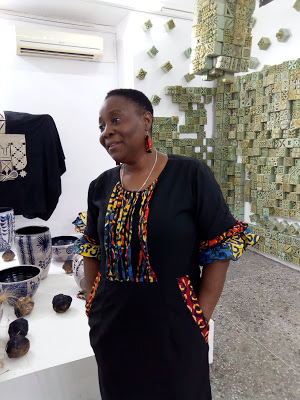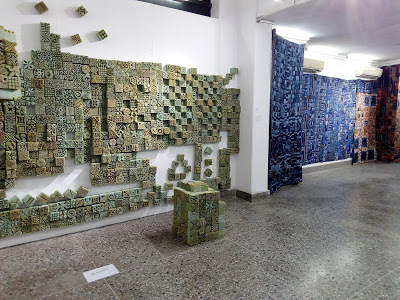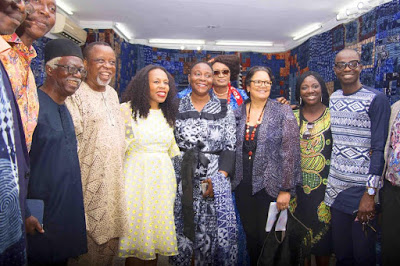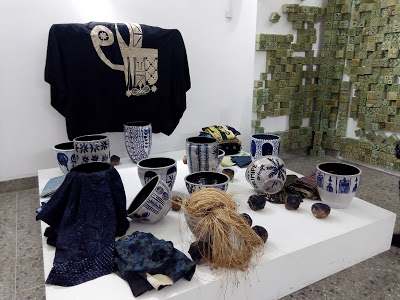The Art exhibition Indigo Reimagined put together by Peju Layiwola, an artist and Professor of Art History at the University of Lagos, is a rich history of our indigenous knowledge developed by local artists, through the art of fabric designing known as adire.
of Lagos, Akoka Lagos. It runs from June 13th to July 30th 2019.
 |
blue from green leaves.
mere craft. It therefore moves into the domain of art worthy of scholarly engagement.
The stencils actually tell us about the entry that men made into the art of fabric designing, because adire was a female preserve. It was done predominantly by women who would sit for hours
on end painting a pattern on a wrapper. In a bid to turn out more yards of dyed patterned fabrics to meet demand, men began to mass-produce using stencils and sewing machines.
artists on cloth were the flora and fauna in an environment. They also depicted historical events and places. One popular fabric is called Ibadan dun (Ibadan is sweet) usually represented by a row of columns of Mapo Hall, a colonial building used as a town hall. Another cloth with inscriptions
refers to ogun pari (war ended).
would write their names, things that they wanted to live for. They also sought to extol their virtues like orimi pe (my head is correct). They also represented lots of animals such as tortoise, snake, lizard (alangba) etc. and represented these in their art. Object types such a combs and plants such as cassava leaves were depicted. So, the artist had an entire range of designs that they represented, and these are the things that survived till now as the classical examples of designs by the local artists.
This exhibition is all about cloth, but it is not just cloth. Only one work in this exhibition is entirely made of cloth, and so, I have used other media to engage with cloth to transfer my creative sensibilities from cloth itself to other media like metal, steel, aluminum foil and other materials that would take it to the domain of scholarly discourse.
textile and pottery also plays out here because the dyes were kept in vats, which were used as pots, and the earthenware pots which allowed in air for the growth of bacteria, which was very necessary for getting the right intensity of hue for the dye.
materials and now import synthetic materials into Nigeria, which I think is a shame.



